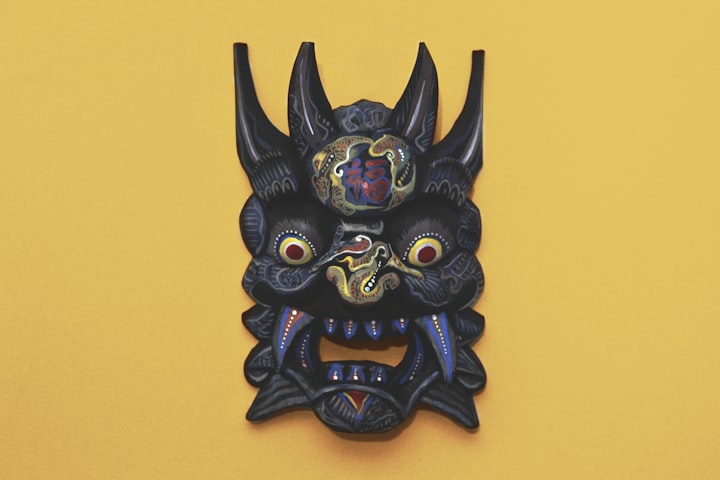A Surprising Case of Cultural Appropriation
The swastika is a religious symbol in some countries.
The Swastika is one of the oldest religious symbols we have, yet it has received a negative meaning in recent history.
It is also one of the most recognized symbols in the world.
It exists in some form in all cultures. Its shape is drawn from nature, a flower opening, or water flowing. In many religions, this auspicious symbol represents eternal love or well-being for all.
In Sanskrit, it translates as swa=well or goodness, asti=is or be: well being.
The Swastika is a multi-layered, multi-dimensional, and contested symbol.
I can’t think of another sign that can compare in being so connected both to the ancient past and the modern world.
It has such radically different narratives attached to it and it simultaneously bridges and divides the worlds of religion and politics, of peace and war, and of East and West
The turning of this four-armed cross represents the movement of the sun across the sky. Some of the older examples are thought to be symbols of fertility; they are often joined in a pattern that echoes a meandering stream.
Artifacts from ancient Greece have inter-linked swastikas in a meander pattern called a key pattern.
It's A Sacred Symbol For Many
The Swastika is a sacred symbol in Hinduism, Jainism, and Buddhism.
There are many different designs and the edges can be drawn to the right or left. In this context, there are usually four red dots in the inner ‘squares’ of the symbol. It is a common sight on temples or houses in India.
What is thought to be the earliest swastika found was carved on an ivory figurine of a bird, from around 12,000–15,000 years ago. It was found in Ukraine. An early Neolithic use of the swastika was also found in Southern Europe, in the Vinca culture.
The swastika experienced a resurgence in the late 19th century when a German archeologist, Herman Schlieman, found a swastika in a dig in Turkey. He decided it was a significant religious symbol of the ancestors of the Germans.
Other scholars determined that it was an ancient symbol of the Aryans, who were a nomadic people who came to the Indus valley around 1500 BC. The Aryans were said to have attempted to keep their bloodline pure, and there is some evidence that the caste system had its beginnings at that time.
Other more modern examples of Pre Nazi use:
The swastika was widely used by architects in North America and can still be found in buildings today. It was a symbol included in package design, architectural friezes, advertising, banknotes, and textiles.
Karlsberg put it on the bottom of beer bottles, Coca-cola used it in their advertising, and the RAF put it on their planes. Boy scouts had a medal with a swastika on it; the Girls club had a magazine called The Swastika.
During World War I, the American 45th Infantry division wore an orange swastika as a shoulder patch. At least one train line had swastikas on its cars.
Interlocking swastikas are in the design of the floor of the cathedral of Amiens, France.
There are many swastikas on buildings in Jerusalem, including the 2nd temple.
Swastika is the name of a small mining town in Ontario, 580 kilometers north of Toronto.
The Swastika Was Appropriated By The Nazis
This symbol had positive meaning for centuries before it was appropriated by the Nazi party.
How it was hijacked.
The swastika was considered the emblem of a strong warrior race.
Hitler considered it an attractive way to differentiate the Nazi movement from its European Christian history.
When Hitler designed the Nazi flag, he put the swastika on it.
The color red symbolized the idea of national socialism, the white disc stood for the national ideals and the swastika symbolized the struggle of the Aryan culture for racial purity. The Nazi regime is considered one of the most evil chapters in history and unfortunately, the swastika is associated with that time.
The swastika is still banned in Germany today.
Can a symbol be guilty of the acts of a madman?
Symbols mean nothing on their own. Otherwise, we would believe that the cross is evil because of its use by the KKK.
Hindus do not want to see this spiritual symbol banned. They want to return it to its original auspicious meaning. There are some that are hopeful that the passage of time and a new generation will allow the swastika to shed its negative history and reestablish itself.
Is it possible that the Jewish community and the Hindu community can come together and educate each other about how this symbol has been viewed in the past?
Reconciliation could be a way to defeat the anger and hatred of Hitler if this symbol could come forward and heal the pain of the past.
Can it be saved?
There is a group that promotes the rehabilitation of the swastika. They are the Pro-Swastika Alliance and have a website at proswastika.org. They advocate for the use of the swastika and recently (Jan 17, 2017) asked for an apology from a California shoe company who called the swastika design on a pair of imported boots an “offensive symbol”.
A cheery video details the history and uses of the swastika before Nazi use and there is information and a link to national swastika day celebrations across the globe. July 15, 2016, was Swastika day in Canada, and small rallies were held across the country.
In order to change the image of the swastika in the world, a process of rebuilding its reputation would need to occur.
I do not hold much hope that it will be possible to rebrand the swastika. It invokes such strong and visceral reactions in many people because of its association with violence and death.
Segue: It appears that I am not the only one that believes the reputation of the swastika is permanently blackened.
Even members of a White Nationalist movement are abandoning it.
The swastika used to be the symbol for the National Socialist Movement in the U.S. but they have recently tried to adopt the Odal rune in an effort to become more mainstream and more integrated.
In Australia, a similar group (One Nation) has done the same thing. They are part of a rising White Nationalist movement called the Aryan Nationalist Alliance that is gaining ground.
In April 2016, in Atlanta, Georgia, about 75 members of 11 groups met at a rally to support the white pride movement. They united the two symbols of the cross and the swastika by burning them in a field. They signed an agreement to pledge support to each other and to this new umbrella association.
The document guarantees autonomy for each group and it contains the statement “our race is our nation and our skin is our uniform”.
Some of the less moderate members of this group want to keep the swastika as a symbol but others see real value in distancing themselves from it. They are no longer old white supremacists, but a younger generation drawn from various online cultures. Their stated focus is on preserving their white heritage and speaking on behalf of white interests.
Many of them are trying to rebrand, to remove themselves from the negatives associated with the swastika.
They use social networking and have organized outreach programs. The philosophy is that actual political power will not be held by a group associated with it and rebranding is the best solution.
The official alliance of these groups deeply concerns me, especially in the current political environment.
- This essay was originally written (by the author) for Liberal Studies at NIC.

If you enjoyed this story, send me a tip so I can write another one.
Or share it on social media. Your recognition means a lot to me.
A version of this story also appears on Medium by Tree Langdon, the author.
About the Creator
Tree Langdon
Get an idea, a new word and a question.
For more, read my bio here.







Comments
There are no comments for this story
Be the first to respond and start the conversation.